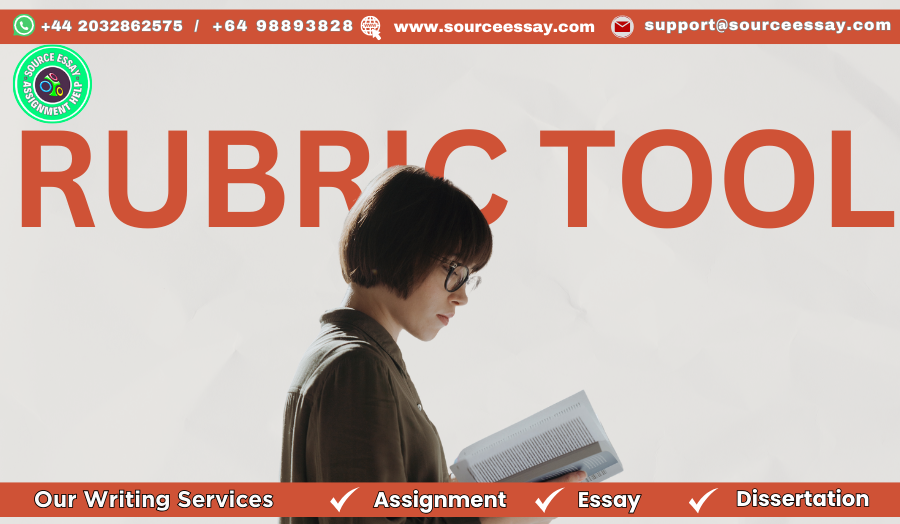Assessment tools
In today’s world, there is a lot of information to consume and knowledge to grasp and use, but in order to genuinely know whether you have understood the topic, you may need to examine yourself, which is why rubrics are used to assess individuals.
Academic use of the tool
Of course, academics utilize this tool to analyze people’s work in an objective and transparent manner, so here’s how a student might improve using the rubrics approach.
- A positive learning experience
- They leave nothing to chance.
- After examining the paper, students will be able to identify their weaknesses.
- They foster good learning experiences.
- This strategy encourages pupils to be more introspective, making them less prone to blame people or problems outside their control.
- They assist kids to avoid comparing themselves to others.
- Sometimes a student feels insufficient in their education, which causes them to look down on themselves.
- They deliver feedback on time.
- The most essential thing is to and provide feedback so that students may improve themselves.
Create an appropriate rubric.
Now focuses on how to build an appropriate rubric for analyzing any assignment or exam.
You must make a rubric first, therefore construct your question as follows:-
- The first thing you should ask is what the assignment’s aim is and what sort of feedback you want to provide the students.
- What is the purpose of your assignment, such that by assigning certain tasks, you want to examine your student’s learning objectives?
- Are they able to meet the learning aim you’ve set?
- The next question is: Does your assignment contain several tasks or simply one task?
- If the assignment is smaller.
- The following question is if your assignment contains numerous tasks or simply one job. If the assignment has a lesser task, it is just as essential as the other tasks in the assignment.
- For example, you must consider the questions concerning the type of task you are looking for.
- It can be passable, outstanding, or whatever.
- What type of key work should your assignment include?
- A last question: what type of feedback do you want to provide your student?
- and how extensive your responses should be. Do you want to assign grades or merely provide comments and feedback?
- The next question is: what type of rubric do you want to use for your students?
There are eight sorts of rubrics.
Of course, it should be evaluated what meets the present demands.
Development rubrics
1. Development rubrics are similar to analytical rubrics but differ in that they do not have specific goals or exams. The major focus is on growth and participation in activities that assist develop these traits.
Task-specific rubrics
2. Task-specific rubrics are simplified, as the name implies. It is task-specific, therefore it is based on real concepts and needs outlined by the lecturer.
Guidelines are presented that must be followed by the learner. To finish the assignment.
Analytic Rubric
3. Analytic Rubric Is a complicated system in which assessments and performance are calculated using the grid system. This is an excellent method for analyzing the learner’s and help in whole skill set as well as determining their flaws and strengths.
The negative of the process is that it takes a long time to build.
Holistic rubric.
4. Holistic rubric Another criteria is the holistic rubric, in which the professor does not evaluate each part individually but rather focuses on the entire, such as when a student writes an assignment or essay. The educator will not grade every component of the essay, such as the argument, writing style, or grammar; rather, they will focus on the overall and coherence, awarding marks ranging from 1 to 4. It is much easier than other rubrics.
Both favorable and negative
Let us talk about the pros and cons of holistic rubrics.
First and foremost, the good aspect of the holistic approach is that educators seek to present instances where students may highlight, for example, how clear their assignment was. How much can they fulfill?
Second The point is that it also saves a lot of time for progression at various levels because the rubric is based on the overall and is very similar between levels.
If we look at the benefits, there is no feedback description or statistics, and scoring might be tough when students’ work varies on different levels and criteria.
General rubric
5. General rubric is an evaluation that takes into account a wide range of factors and themes, including performance and comprehension. The grading system goes from not meeting expectations to exceeding them. According to the professor, they may be customized, and they are one of the most generic and easy options available.
The assignment rules are fairly clear, and it also provides students with rapid access to material to assist them comprehend their work. That is why the grading system is structured in such a way that it ranges from not meeting to exceeding expectations.
Single-Point Rubric
6. A single-point rubric is straightforward to produce and divides all of the main components of an assignment into distinct categories, but it does not identify multiple degrees of performance; instead, it uses basic phrases such as professional, exceptional, and so on. It is widely used by many educators since it is easy to make, and it is also used while teaching because the majority of students read the description, which is something.
Assignment help Australia , university essay help Australia , essay help Australia

